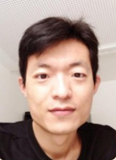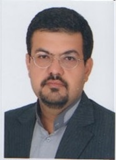
Invited Speakers
| Prof. Yanguo Jing Leeds Trinity University, UK Professor Dr Yanguo Jing is the Dean of the Faculty of Business, Computer Science and Digital Industries, Leeds Trinity University. He is a Professor of Artificial Intelligence. He has a PhD (Heriot-Watt University, UK), a MSc, a 1st class BSc (Hons) in Computer Science and a PGCert in Learning and Teaching in Higher Education. He has over 20 years’ teaching, research and enterprise experience in the UK and in China. Yanguo is a Certified Management & Business Educator, a Fellow of the British Computer Society, a Charter IT professional and a Principal Fellow of the Higher Education Academy in the UK. Prof. Jing’s prime research interests are AI and big data. His recent research work focuses on the use of machine-learning methods to capture interaction and user behaviour patterns that can be used to develop intelligent applications. This research has been applied in applications such as business analytics, sports analytics, and user behaviour pattern recognition in social networks and extra-care/ Assisted Living settings. He participated in several research, KTP and consultancy projects with sponsors and clients such as Cadent Gas, Pfizer, Welsh Government, KPIT, UK’s Comic Relief charity and JISC in the UK. Speech Title: The use of machine learning to predict technical skills in youth grassroots soccer Abstract: The aim of this study was to determine the contributors to football technical skill in grassroots youth football players using a machine learning approach. Machine learning models are used to predict technical skill. A recursive feature elimination method was used to eliminate the worst performing features using linear regression and ridge regression. Five machine learning models (linear, ridge, lasso, random forest and boosted trees) were used in the study. Results from the machine learning analysis indicated that total Fundamental Movement Skills (FMS) score (0-50) was the most important feature in predicting technical soccer skill closely followed by coach rating of child skill for their age, years playing experience and Age at Peak Height Velocity (APHV). Using a random forest, technical skill could be predicted with 99% accuracy in boys who play grassroots soccer, with FMS being the most important contributor. Coaches at grassroots level, should therefore be mindful of the importance of FMS for technical skill in youth players. |
Assit. Prof. Xiaohao Cai University of Southampton ,UK Xiaohao Cai is a lecturer (Assistant Professor equivalent) in the School of Electronics and Computer Science at the University ofSouthampton. He received his PhD degree in mathematics from The Chinese University of Hong Kong in 2012. He afterwardswas a Postdoctoral Researcher at the Department of Mathematics of the Technische Universitat Kaiserslautern in Germany. Afterthat he was a Research Fellow (Wellcome Trust and lssac Newton Trust) affiliated with the Department of Plant Sciences andDepartment of Applied Mathematics and Theoretical Physics at the University of Cambridge. Thenceforth, before joiningouthampton. he was a Research Fellow in the Mullard Sace Science laboratory (MSSL) at University College london (UCL. Heis Fellow of Advance HE in the UK. He has broad multi-disciplinary research interests in applied mathematics, statistics, andcomputer science, with main focus and applications in imagesignal/data processing, optimisation, machine learning andcomputer vision. He has published over 40 peer-reviewed papers on top journals such as SIAM journals and lEEE transactions. Speech Title: Segmentation and Classification using Deep Learning Technologies Abstract: Deep learning technologies have revolutionised many fields including computer vision and image processing. Their success generally relies on big data. However, for the data scarcity scenarios like in medical imaging, their performance could drop significantly. Moreover, in many cases, they also lack generalisation (e.g. the cross-domain adaptation problem) and explanation (e.g. explainable AI). In this presentation, I will introduce some of our recent work on segmentation and classification targeting those challenges, such as subspace feature representations for few-shot learning, cross-domain adaptation in point clouds, multilevel explainable AI, etc. |
|
| Assoc. Prof. Por Lip Yee, IEEE Senior Member University of Malaya, Malaysia Lip Yee received his Ph.D. from University of Malaya, Malaysia under the supervision of Prof. Abdullah bin Gani in 2012. Currently, he is an Assoc. Professor at the Department of System and Computer Technology, Faculty of Computer Science and Information Technology, University of Malaya, Malaysia. He is also a senior member of IEEE. Lip Yee and his team were the first few pioneers who received IRPA, E-Science, FRGS, ERGS, PRGS, HIR and IIRG grants. He was the first person who managed to secure 2 E-Science funds with the role of PI in 2008. He was also the first person at the FCSIT who managed to secure the PRGS and ERGS grants. Beside collaborators from Malaysia, Lip Yee also has international collaborators from France, UK New Zealand, Turkey, Thailand and China. He also established his connection with his national and international collaborators with some industrial partners in Malaysia and other countries. Speech Title: Recognition-Based Graphical Passwords (RBGPs): Navigating the Challenges of Shoulder-Surfing Attacks Abstract: In the ever-evolving landscape of digital security, the quest for robust and user-friendly authentication methods is paramount. This presentation delves into the intricate world of recognition-based graphic passwords (RBGPs), a promising alternative to traditional alphanumeric passwords, addressing their unique strengths and vulnerabilities, particularly against shoulder-surfing attacks (SSAs). We begin with an introduction to the criticality of computer security and the fundamental role of authentication in safeguarding digital assets. The presentation outlines the transition from conventional knowledge-based methods, such as passwords and PINs, to more sophisticated techniques like RBGPs, highlighting their reliance on the human ability to better recall visual information. Central to our discussion is the exploration of various RBGP methods and their susceptibility to different forms of SSAs: direct observation, multi-observation, and video-recorded attacks. We provide a comprehensive analysis of the types of pass-objects used in these methods and their implications for security. The strengths and weaknesses of selected RBGP systems are scrutinized, offering insights into their resistance to the aforementioned SSA forms. Furthermore, the presentation evaluates the balance between security and usability in these methods, considering factors such as login time and password space estimation. This analysis not only reflects the current state of RBGPs in combating SSAs but also underscores the challenges and potential strategies for enhancing their efficacy and user experience. Concluding with a synthesis of our findings, the presentation aims to shed light on the future trajectory of RBGPs in digital security. It invites the audience to reflect on the delicate balance between innovation in authentication methods and the imperatives of cybersecurity, paving the way for further research and development in this vital field. |
Assoc. Prof. Pavel Loskot, IEEE Senior Member Zhejiang University-University of Illinois at Urbana-Champaign Institute (ZJUI), China Pavel Loskot joined the ZJU-UIUC Institute in January 2021 as the Associate Professor after being nearly 14 years with Swansea University in the UK. He received his PhD degree in Wireless Communications from the University of Alberta in Canada, and the MSc and BSc degrees in Radioelectronics and Biomedical Electronics, respectively, from the Czech Technical University of Prague in the Czech Republic. He is the Senior Member of the IEEE, Fellow of the Higher Education Academy in the UK, and the Recognized Research Supervisor of the UK Council for Graduate Education. His current research interest focuses on problems involving statistical signal processing and importing methods from Telecommunication Engineering and Computer Science to other disciplines in order to improve the efficiency and the information power of system modeling and analysis. Speech Title: Mathematical Models in Network Molecular Biology Abstract: Network molecular biology studies molecular interactions that are involved in various cellular processes. These interactions are often represented by complex networks that can be analyzed to identify the key components as well as to predict the unknown components including biochemically important species, reactions and pathways in cellular systems. This can be achieved by forming and analyzing static structures of, for example, protein-to-protein interaction networks and metabolic networks, which is dependent on our biological knowledge, availability of experimental data, and often also on the hypothesis to be tested. However, static network models are usually only good when larger spatio-temporal scales can be considered. At smaller scales, more accurate modeling requires capturing the dynamical responses of molecular systems to the internal and external perturbations. The dynamic models in molecular biology are often represented by various forms of differential equations, and they are referred to as kinetic models. The properties of these models can be studied in terms of the underlying stochastic processes, and observability and controlability of the dynamical systems. These models have many practical applications from designing biological circuits, discovering drugs, controlling biochemical reactors to understanding disease spreading. |
|
| Assoc. Prof. Ata Jahangir Moshayedi Jiangxi University of Science and Technology, China Dr Ata Jahangir Moshayedi, Associate professor at Jiangxi University of Science and Technology, China, PhD. In Electronic Science from Savitribai Phule Pune University, India. IEEE member, Instrument Society of India as a Life Member, Lifetime Member of Speed Society of India, member of the editorial team of various conferences and journals like; International Journal of Robotics and Control, JSME, Bulletin of Electrical Engineering and Informatics, International Journal of Physics and Robotics Applied Electronics, etc., 80 papers published in national journals and conferences, 3 books published, Owns 2 patent, 9 copyright. His research interest includes: Robotics and Automation/ Sensor modelling /Bio-inspired robot, Mobile Robot Olfaction/Plume Tracking, Embedded Systems / Machin vision-based Systems/Virtual reality, Machine vision/Artificial Intelligence. Speech Title: Revolutionizing AGV Service Robots: Enhancing Missions, Overcoming Obstacles, and Empowering Vision Abstract: Service robots play a crucial role in enhancing human life, spanning from healthcare to industrial applications. These robots not only have the potential to save lives but also assist with labor-intensive tasks, ensuring precision and efficiency. According to ISO 8373:2012, service robots can be categorized into personal service robots designed for non-manufacturing settings, and professional service robots utilized by both non-commercial individuals and commercial professionals. Whether semi-autonomous or fully autonomous, service robots have gained acceptance as valuable human assistants, finding applications in diverse industries, particularly as integral components of production lines. As we progress through the stages of industrial revolution, with mechanization, electric power, and the advent of Industry 4.0 combining digital and internet technologies, service robots are at the forefront of technological innovation. In this comprehensive discourse, we delve into the realm of AGV service robots, elucidating the intricacies of their modeling steps and simulation techniques while introducing an innovative approach known as fusion. Our primary objective is to empower researchers with invaluable insights into the seamless implementation of diverse control systems on meticulously modeled service robot systems. |




